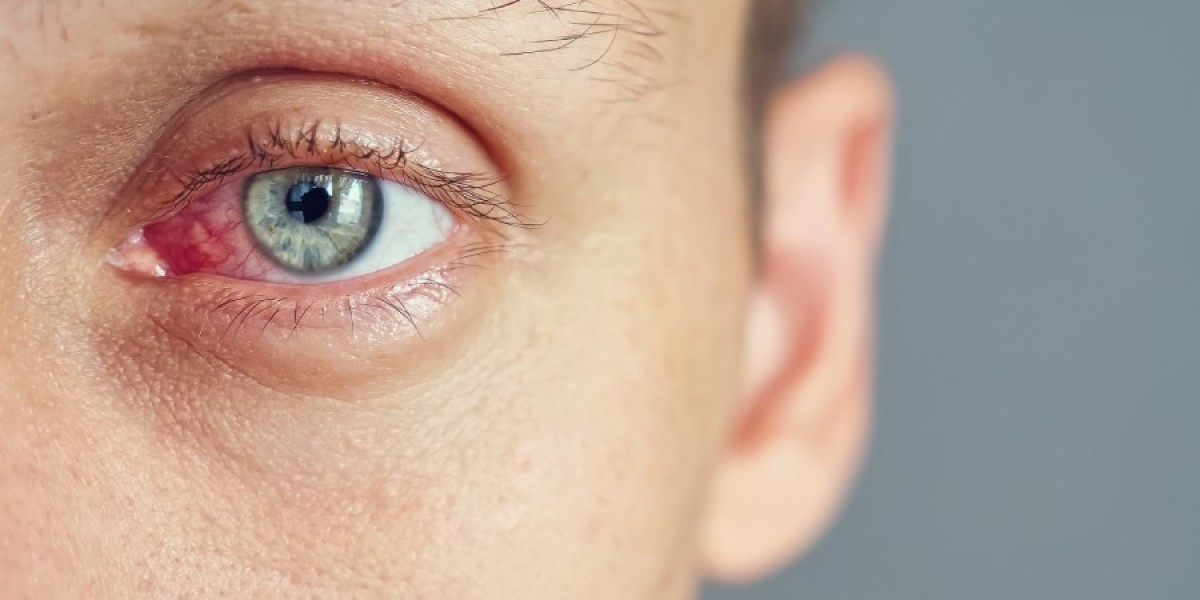Red, itchy, and swollen eyelids can disrupt daily comfort and blur the joy of clear vision. These are common signs of blepharitis — a chronic eye condition that affects the delicate edges of the eyelids.
Blepharitis often goes undiagnosed or mismanaged due to its recurring nature. However, with the right care at a trusted ophthalmology clinic, long-term relief is achievable.
This guide helps you understand blepharitis, its causes, symptoms, and the importance of seeking specialised care for effective blepharitis treatment
What Is Blepharitis?
Blepharitis is the inflammation of the eyelid margins, usually involving the oil glands near the base of the eyelashes.
It may occur in one or both eyes, and can be either anterior (affecting the outside front edge of the eyelid) or posterior (involving the inner edge of the lid).
Though not contagious or vision-threatening in most cases, it can become chronic and affect overall eye comfort and health if left untreated.
Common Symptoms of Blepharitis
Recognising symptoms early allows timely intervention and reduces discomfort.
Many patients initially think it’s just an eye allergy or dry eye, delaying proper diagnosis.
Some of the most common symptoms include:
Burning or stinging sensation in the eyes
Red, swollen eyelids or eyelid margins
Crusts at the base of eyelashes, especially upon waking
Gritty feeling, like sand in the eye
Dry eyes or excessive tearing
Blurred vision that improves with blinking
If these symptoms persist, it's crucial to consult an ophthalmology clinic for a proper evaluation.
What Causes Blepharitis?
Understanding the root causes of blepharitis helps in selecting the right treatment approach.
Several factors contribute to this condition, and sometimes it may be a combination of them.
Key causes include:
Bacterial infections, especially Staphylococcus species
Dysfunction of the meibomian glands (oil-producing glands in eyelids)
Seborrheic dermatitis or dandruff on the scalp and eyebrows
Rosacea affecting the skin of the face and eyelids
Allergic reactions to eye makeup or contact lens solutions
Blepharitis is often associated with other eye conditions like dry eye syndrome, and treating both together leads to better outcomes.
Why Choose an Ophthalmology Clinic for Blepharitis Treatment?
Home remedies may offer temporary relief, but long-term management needs professional care.
An ophthalmology clinic provides specialised evaluation and customised blepharitis treatment tailored to your specific type and severity.
These clinics are equipped with diagnostic tools and skilled professionals who focus solely on eye health.
Professional Diagnosis at Eye Clinics
At a specialised ophthalmology clinic, the diagnosis of blepharitis is conducted with precision.
Doctors use slit-lamp examinations to closely observe the eyelids, oil glands, and tear film.
They may also assess for co-existing conditions like dry eye, rosacea, or ocular allergies.
This comprehensive approach ensures that all contributing factors are addressed for complete care.
Effective Blepharitis Treatment Options
Treatment focuses on reducing inflammation, improving eyelid hygiene, and restoring gland function.
A combination of therapies may be recommended, depending on whether it is anterior or posterior blepharitis.
Typical treatment options include:
Eyelid Hygiene: Regular cleaning of eyelid margins using prescribed wipes or diluted baby shampoo.
Warm Compresses: Softening clogged oil glands to improve secretion.
Topical Antibiotics: Reducing bacterial load in chronic cases.
Oral Antibiotics: Tetracycline-class medicines may be prescribed in moderate to severe conditions.
Steroid Eye Drops: Used cautiously to reduce inflammation.
In-office Procedures: Advanced clinics offer meibomian gland expression or thermal pulsation therapy for resistant cases.
The success of blepharitis treatment improves significantly when patients follow their ophthalmologist’s instructions consistently.
Self-Care and Lifestyle Adjustments
Long-term management also includes lifestyle adaptations to avoid flare-ups.
Maintaining facial and scalp hygiene can reduce recurrences.
Avoiding expired cosmetics, switching to preservative-free eye drops, and reducing screen time may also help.
Staying aware of triggers like smoke, dust, or allergens can keep symptoms under control.
Patients should never stop treatment abruptly, especially if prescribed long-term medications.
When to Revisit the Eye Clinic
Blepharitis often requires ongoing monitoring, especially in chronic or severe cases.
Follow-up visits help track progress, make necessary treatment adjustments, and prevent complications.
Some warning signs that need immediate attention include:
Sudden worsening of redness or swelling
Pain or discharge from the eye
Significant vision changes
Formation of styes or chalazion
Early intervention ensures a faster return to comfort and reduces the risk of corneal involvement.
Risks of Delayed or Inadequate Treatment
Ignoring blepharitis or relying solely on home remedies may lead to complications.
Untreated inflammation can cause damage to the eyelid structure and the cornea.
Possible complications include:
Recurrent styes
Chronic dry eyes
Eyelash loss or misdirection
Conjunctivitis or secondary infections
Scarring of the eyelid margin
These risks underline the importance of expert care from a specialised ophthalmology clinic.
Choosing the Right Eye Hospital for Care
When seeking blepharitis treatment, it's essential to choose an eye hospital that combines clinical expertise with compassionate care.
An ideal hospital provides access to skilled ophthalmologists, state-of-the-art equipment, and patient-centric treatment plans.
Look for facilities that offer continuity of care, especially for chronic conditions like blepharitis.
Maxi Vision, as a super speciality eye hospital, ensures every patient receives personalised attention and advanced treatment options tailored to their needs.
Its experienced specialists, backed by cutting-edge technology, provide a holistic approach to managing conditions like blepharitis with precision and empathy.
Conclusion
Blepharitis may be a common eye condition, but it deserves specialised and continuous care for lasting relief.
Understanding the symptoms, causes, and available treatments can empower patients to seek help at the right time.
With dedicated professionals and advanced techniques, super speciality hospitals like Maxi Vision Eye Hospital offer a clear path to comfort, eye health, and restored quality of life.






